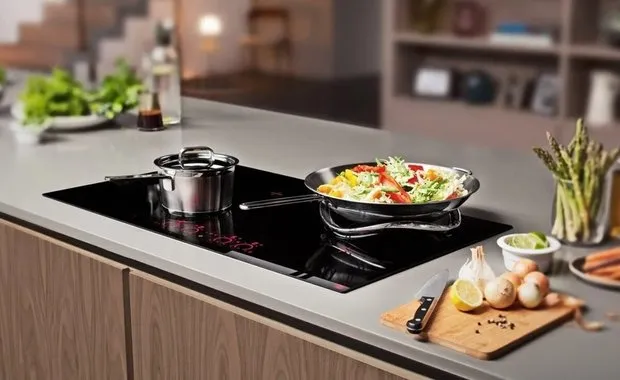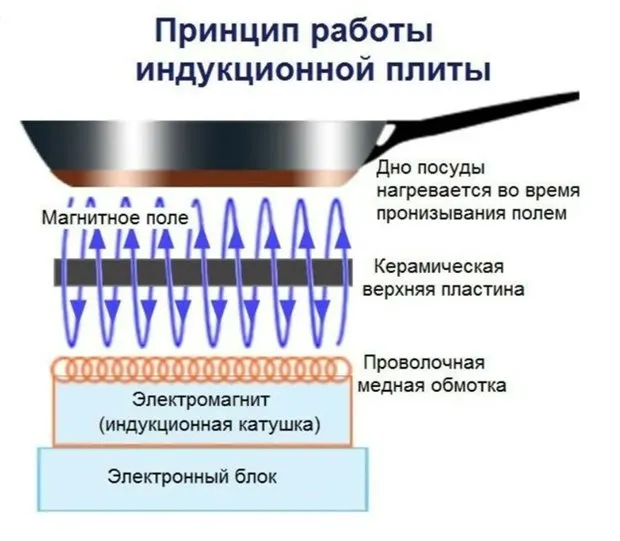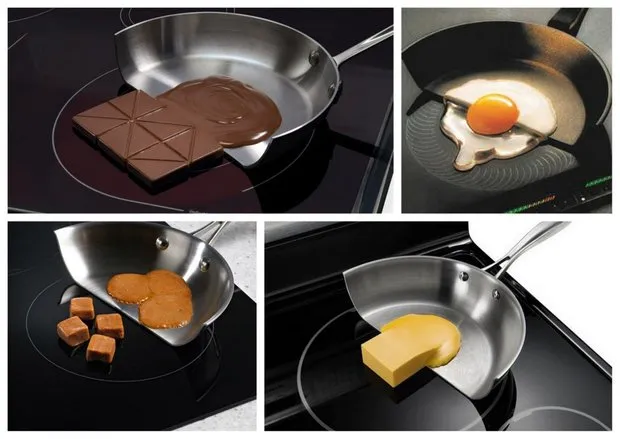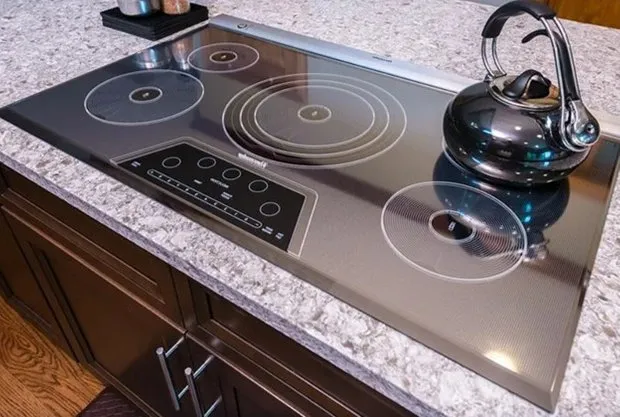There can be your advertisement
300x150
Is It Worth Dealing with an Induction Cooktop? Revealing Its Pros and Cons
We tell you how it differs from an electric one and whether you should consider having one
An induction cooktop is a relatively new trend on the modern kitchen, but not all housewives have had time to appreciate its advantages and disadvantages yet.
Regular or Induction?
The principle of operation of a regular stove is not trivial: voltage is applied to the heating element, which causes its heating and then heats the burner. The burner in turn heats the pot or pan with food.
These days, it's rare to find burners, and thermal energy almost directly passes through tempered glass.
 Pinterest
PinterestIn an induction cooktop, there is no so-called heating element. Instead, a coil with a magnetic field generates eddy currents in the cookware itself.
Thus, two features of such a stove can be highlighted: the absence of a heating element and the generation of heat on metal cookware. Both have their pros and cons.
Let's examine them.
 Pinterest
PinterestStove Without Heating Elements
So, if the stove does not emit heat, then on it:
- nothing can burn;
- no grease appears;
- it's hard to get burned.
 Pinterest
PinterestHowever, the stove only heats the bottom of the cookware, so you can forget about saucepans and pots. This will be a significant drawback for those who are used to cooking in such cookware.
On the other hand, the fact that this stove heats up very quickly will surely please everyone. Water in a five-liter pot will boil within minutes, and oil on a skillet will start to sizzle after just a few seconds. This makes an induction cooktop ideal for reheating soups and browning meat, but pancakes will take some effort.
As for electricity consumption, it will be minimal compared to a traditional model.
 Pinterest
PinterestNeed for Metal Cookware
An induction cooktop only works with cookware made of metal with ferromagnetic properties – cast iron and steel will not work. It’s also unlikely to heat food in an aluminum or glass pot.
Special accessories for such stoves are much more expensive than usual, but they have a long service life. If you're unsure about the quality of cookware, bring a magnet close to its bottom – if there’s mutual attraction, you can confidently buy it.
 Pinterest
PinterestOf course, budget options for skillets are available on the market, but too thin a bottom will quickly deform under the influence of the electromagnetic field.
An induction cooktop is an excellent alternative to an electric one if you take into account all the above nuances and adapt to it later.
More articles:
 The "Dirty" Zone in the Foyer: 8 Ideas Within Everyone's Reach
The "Dirty" Zone in the Foyer: 8 Ideas Within Everyone's Reach How to Create a Comfortable Interior in 2022: 7 Key Trends from the Pros
How to Create a Comfortable Interior in 2022: 7 Key Trends from the Pros Gifts You'll Want to Give: Top-10 Finds from IKEA
Gifts You'll Want to Give: Top-10 Finds from IKEA How to Decorate an Empty Wall: 10 Super Solutions from Designers
How to Decorate an Empty Wall: 10 Super Solutions from Designers Minimal Decorations and Scandi Style: Which Christmas Trees Did Bloggers Choose
Minimal Decorations and Scandi Style: Which Christmas Trees Did Bloggers Choose Bright Interior Without a Designer: Cool Ideas and Common Mistakes
Bright Interior Without a Designer: Cool Ideas and Common Mistakes How to Choose a Fireplace for an Apartment: Everything You Won't Be Told in the Store
How to Choose a Fireplace for an Apartment: Everything You Won't Be Told in the Store From a cramped 'killed' single-room apartment to a comfortable and very beautiful two-room flat
From a cramped 'killed' single-room apartment to a comfortable and very beautiful two-room flat